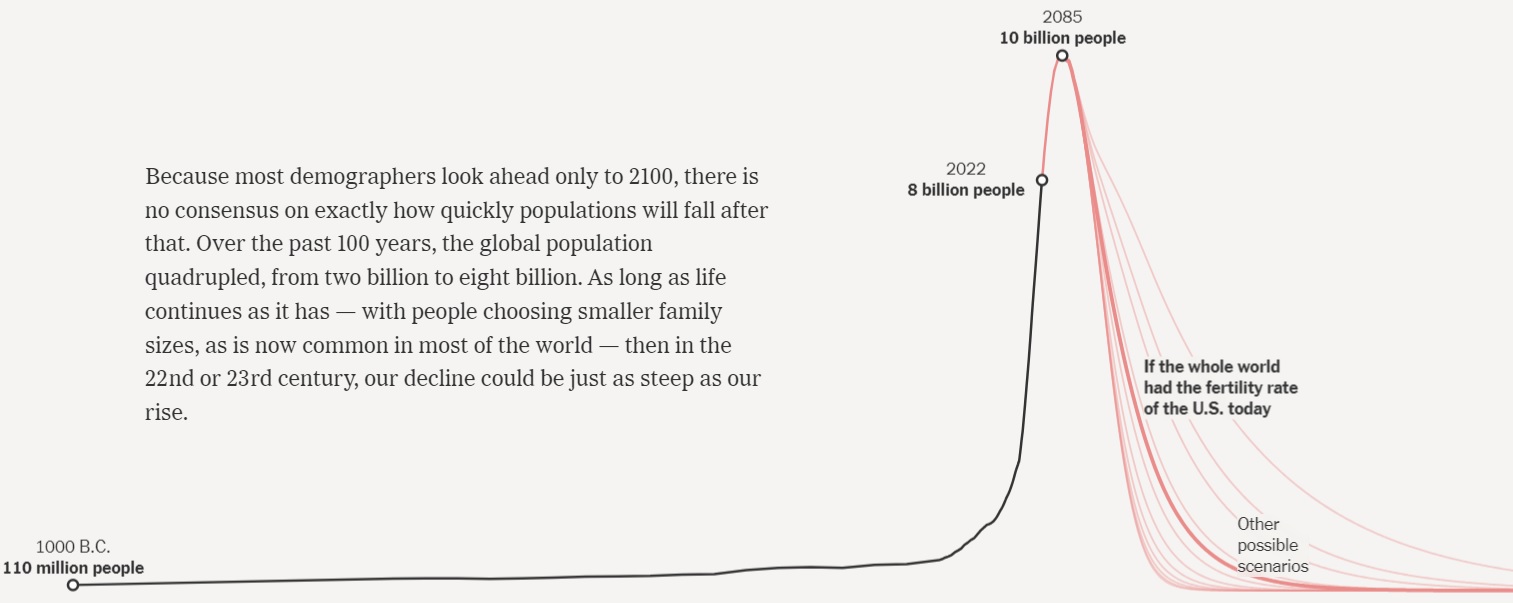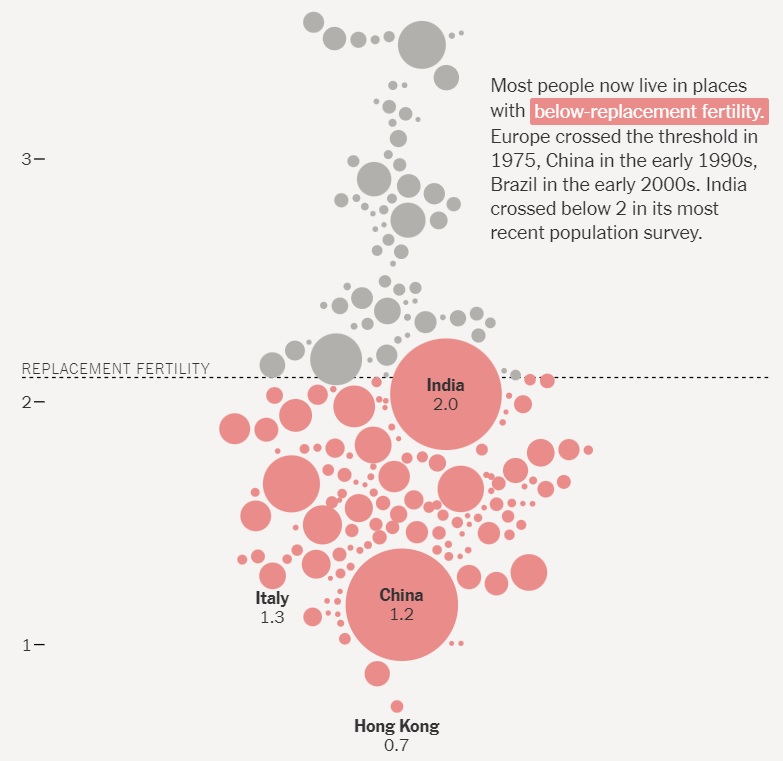Many nations face a slow-motion fiscal crisis because of demographics.
To be more specific, politicians last century created welfare states and social-insurance systems that take money from workers in order to provide pensions and health care to old people.
Those decisions were misguided (compared to market-based approaches), but the math sort of worked. After all, everyone assumed there would be population growth, meaning there would always be enough future workers to support future retirees.
But the world has changed. Dramatically.
Let's look at some data from a column in the New York Times by Dean Spears, who teaches at the University of Texas.
We'll start with this chart showing that the world's population will peak in 2085 and then dramatically decline.

Why will the world's population shrink?
Because birthrates have plummeted. Many nations already have reached "below-replacement fertility" and others will reach that level in the near future.

There's nothing wrong with lower levels of fertility, of course. Families should be as big or small as people want them to be.
But lower levels of fertility have a profound impact on social-insurance systems, as explained in Part I and Part II.
Let's go to the Population Pyramid website and examine two countries.
We'll start with the United States, since nearly 80 percent of my readers are American. As you can see, the USA had a population pyramid back in 1964, meaning plenty of working-age people and not that many old people to subsidize.
But that ratio is dramatically different in 2023 and it will change even more by 2050. With very grim fiscal consequences.

Let's also take a look at Italy, since it is often viewed as a nation facing big demographic challenges.
The most shocking takeaway is that the population pyramid from 1964 is morphing into an upside-down pyramid.

So what can politicians do in response? There are three options.
- They can try to cajole or bribe people to have more kids (i.e., more future taxpayers), but those policies don't seem to be very effective - even in place such as Hungary.
- They can impose massive tax increases on lower-income and middle-class households, which is the approach that is implicitly embraced by Trump and Biden.
- They can shift to retirement systems based on private savings, like Australia, Chile, Switzerland, Hong Kong, Netherlands, the Faroe Islands, Denmark, Israel, and Sweden.
The right answer should be obvious, though some politicians want to make the crisis worse.

No comments:
Post a Comment